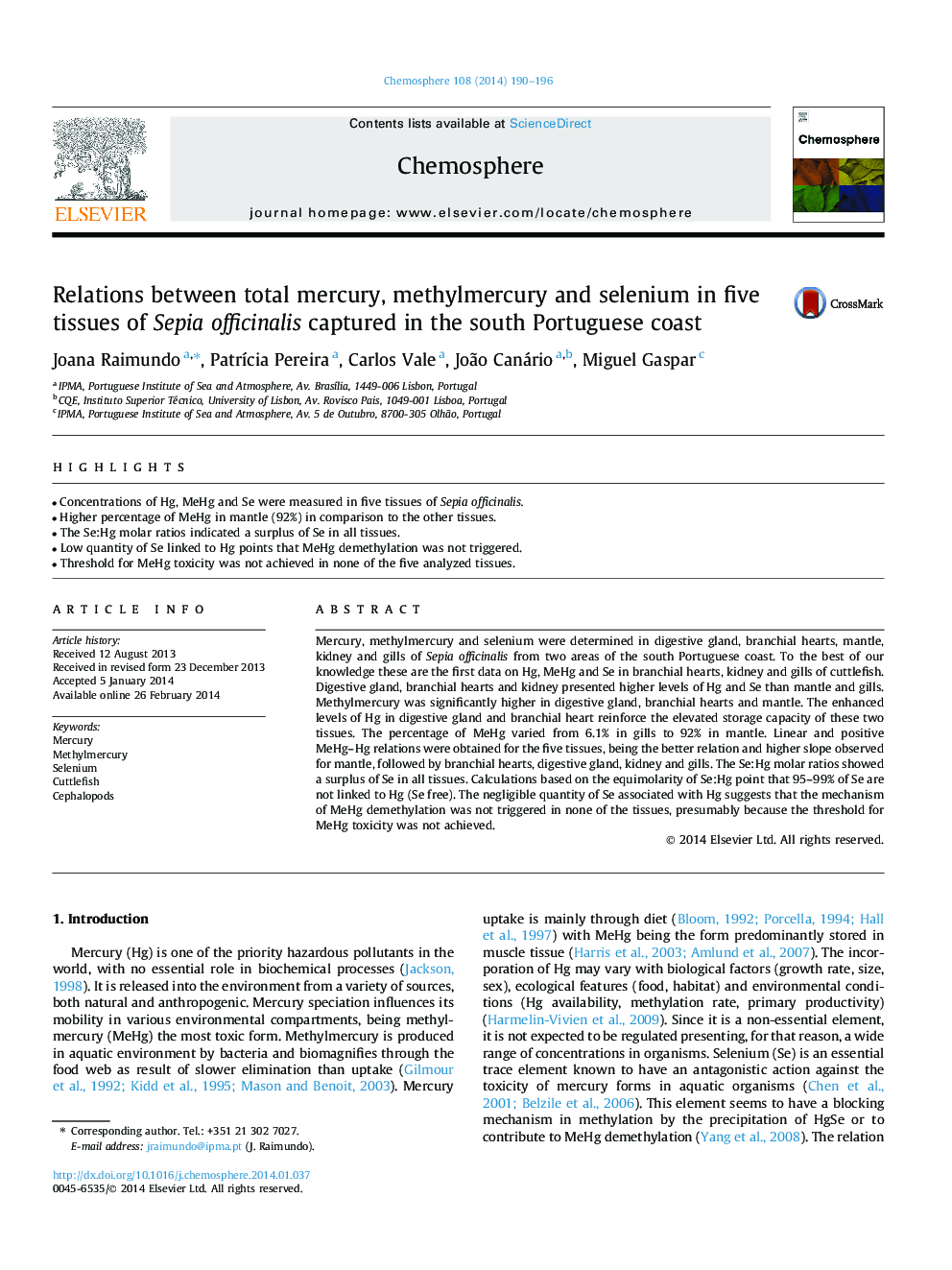| Article ID | Journal | Published Year | Pages | File Type |
|---|---|---|---|---|
| 6309367 | Chemosphere | 2014 | 7 Pages |
â¢Concentrations of Hg, MeHg and Se were measured in five tissues of Sepia officinalis.â¢Higher percentage of MeHg in mantle (92%) in comparison to the other tissues.â¢The Se:Hg molar ratios indicated a surplus of Se in all tissues.â¢Low quantity of Se linked to Hg points that MeHg demethylation was not triggered.â¢Threshold for MeHg toxicity was not achieved in none of the five analyzed tissues.
Mercury, methylmercury and selenium were determined in digestive gland, branchial hearts, mantle, kidney and gills of Sepia officinalis from two areas of the south Portuguese coast. To the best of our knowledge these are the first data on Hg, MeHg and Se in branchial hearts, kidney and gills of cuttlefish. Digestive gland, branchial hearts and kidney presented higher levels of Hg and Se than mantle and gills. Methylmercury was significantly higher in digestive gland, branchial hearts and mantle. The enhanced levels of Hg in digestive gland and branchial heart reinforce the elevated storage capacity of these two tissues. The percentage of MeHg varied from 6.1% in gills to 92% in mantle. Linear and positive MeHg-Hg relations were obtained for the five tissues, being the better relation and higher slope observed for mantle, followed by branchial hearts, digestive gland, kidney and gills. The Se:Hg molar ratios showed a surplus of Se in all tissues. Calculations based on the equimolarity of Se:Hg point that 95-99% of Se are not linked to Hg (Se free). The negligible quantity of Se associated with Hg suggests that the mechanism of MeHg demethylation was not triggered in none of the tissues, presumably because the threshold for MeHg toxicity was not achieved.
